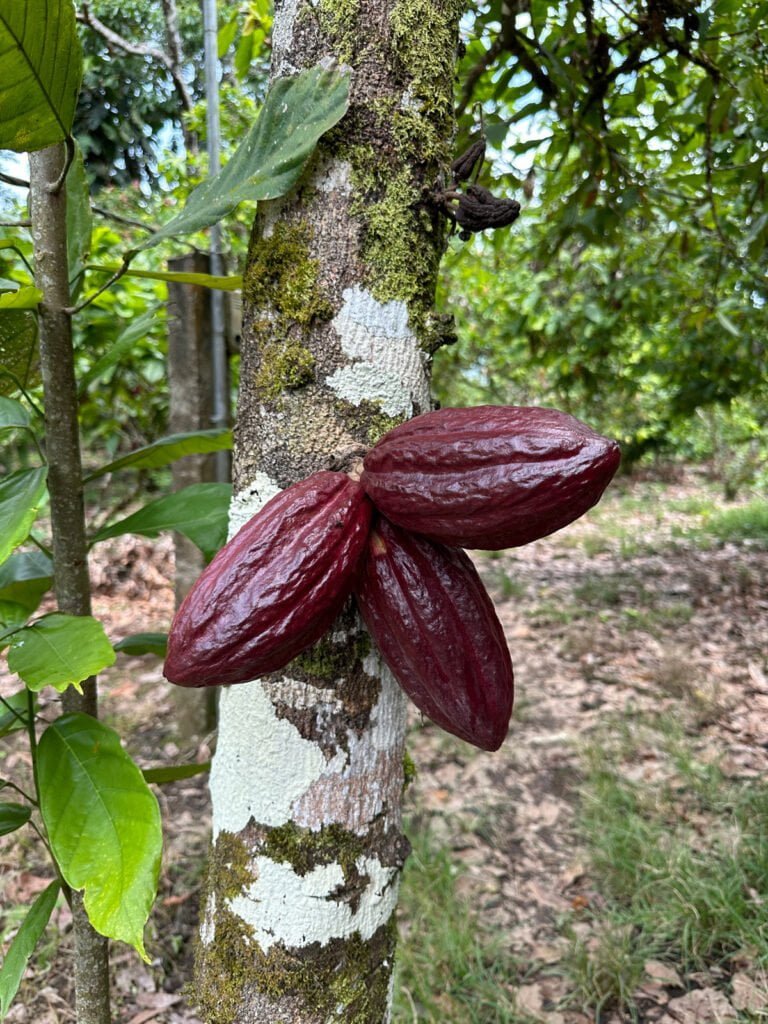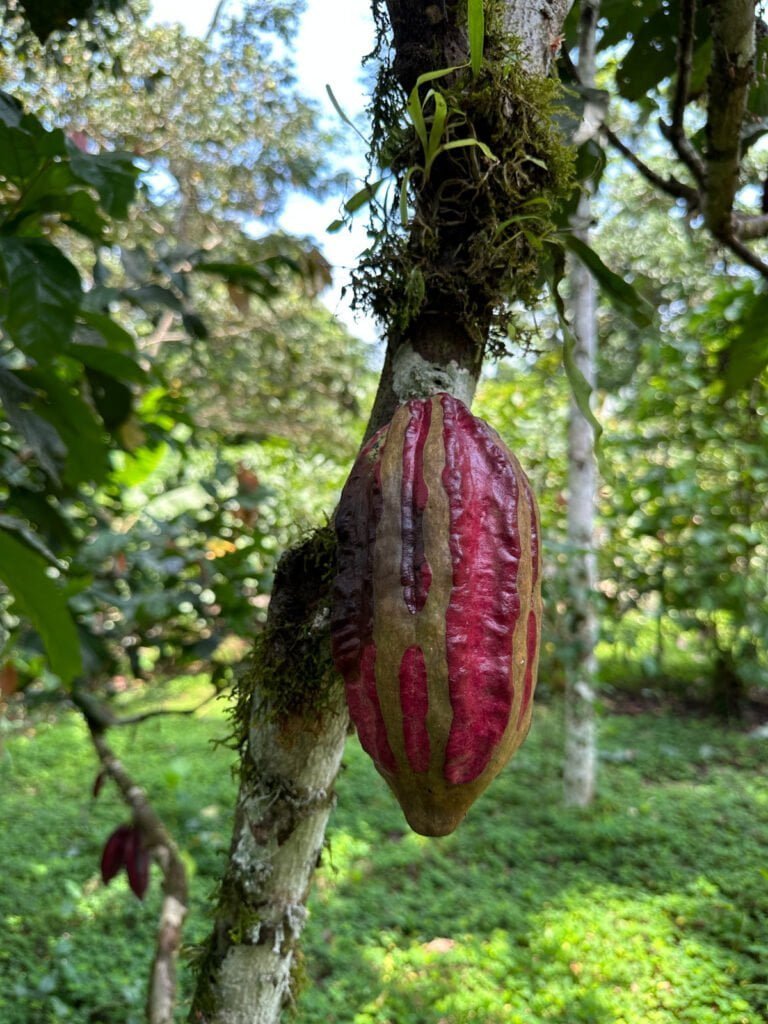Cacao Cultivation. Where is 70% of cacao grown?

Featured products Learn more about our offer
View productsCultivated from the forests of South America, the cacao tree proper (Theobroma cacao), has spread to many parts of the world, and today the cacao tree is one of the most important plants for humans. Bill Laws described it in his book titled: “50 Plants That Changed the Course of History” (Alma-Press 2016), and Charles Linnaeus called cacao “the food of the gods.” He repeated a term that already existed in the time of the Maya and Aztecs, who made ceremonial cacao from cacao fruit, which was drunk in the courts of the most influential among them. Nowadays, cacao cultivation is widespread around the world, although it is most important in African countries. Learn more about the properties of cacao.
Cacao cultivation in numbers
As reported by Statista, 70% of cocoa entering the global market originates from four countries in West Africa, namely Ivory Coast, Ghana, Nigeria, and Cameroon.[1]. The cacao giants, however, are the first two of these countries – together they account for more than 50% of the total production. Interestingly, cocoa in Ghana (formerly known as the Gold Coast) saved and still saves lives. After their independence in 1957, 80% of the population lived off agriculture, mainly growing just cacao [2]. To this day, cacao plantations are a true treasure of Ghana. As for the Ivory Coast, the “tradition” of cultivation was imposed there during the colonial era by the French, and currently, the country is the world’s largest producer of cacao.
Producers of somewhat lesser extent include Indonesia, Brazil, Peru and Ecuador. Most of the plantations are on small farms with fields of up to five hectares. Only 5% of the crop is harvested from large plantations (over 40ha). This has some advantages – after all, cacao gives jobs to millions (about 40-50) of farmers!
Raw cacao “growing” on trees
The cacao tree is a plant that, without human intervention, can reach heights of several meters. In plantations, however, it is pruned to a height of about 3 to 5 meters to facilitate maintenance and harvesting. The tree bears elongated fruits that resemble the shape of balls used in American football. Initially, they are green, but as they ripen, they turn yellow (or become reddish). Each has 20 to 30 grains covered in sweet flesh. Cacao fruits of different varieties vary in colour and size. What they have in common, however, is tough skin and white flesh inside. Although the cacao tree bears fruit throughout the year, its cultivation is demanding and relatively inefficient.


Trinitario cacao fruit


Rotten cacao fruit
From one tree, only about half a kilogram of beans is harvested in a year. As a result, only one ton of cacao is obtained annually from a hectare of plantation. The harvest is manual – cacao pods are cut down with machetes or knocked off with sticks, taking care not to damage the tree. This is because cacao is brittle and has a shallow root system. Climbing onto the higher branches of the crown is too risky for them, so plantation workers rely on long poles and lifts. It takes a lot of experience for a farmer to determine which fruits are ripe. Despite bearing fruit throughout the year, the pods are usually harvested seasonally, usually twice a year. After harvesting, the pulp undergoes fermentation, followed by the extraction of cacao beans, secondary fermentation, drying, roasting, and finally, grinding.
Learn more about raw cacao
How are cacao trees grown?


Cacao cultivation is difficult and time-consuming. In order to establish a plantation, seeds must be sown – either collected directly from the pods or those that have not yet had time to dry (or that have been protected from drying out). The species quickly loses its germination power. Seeds are often sown in protective baskets or in nurseries, where they are protected from the sun and wind. However, the seedlings grow so fast that they are ready to be planted in their permanent place after just a few months. With good conditions and regular pruning, the cacao tree bears fruit in the fifth year after planting. The longevity of the tree is unknown (there have been found isolated cacao trees as old as 200 years), while its economic viability is estimated at 25 years[3].


Cacao Plantation CCN-51
Light
Cacao likes plenty of diffused light. Direct light harms it – especially in the early stages of cultivation. In the later stages of growth, the tree begins to cope with strong exposure, as long as the ground is rich in nutrients and regularly watered. Protection from wind is also necessary. That’s why cacao trees are planted in the shade of trees, or, for instance, the banana plant, rubber and coconut.
Moisture
The tree requires high humidity in both the air and the soil – throughout the entire season! The optimal distribution of rainfall ranges from 1250 to 3000 mm annually, with rainfall needing to occur regularly, and drought periods should not exceed 3 months. This is one of the main problems that plantation owners face.
Temperature
The minimum growing temperature is 18°C, the maximum is 32°C. Only in such conditions can the cacao tree develop properly. If the temperature stays below 10°C for several days, it has a significant negative impact on the quantity and quality of the crop. At 4°C, the tree experiences freezing.
Substrate
Cacao is grown in various types of soil, but it is preferable for the soil to have a high moisture retention capacity. It must also be fertile to a depth of at least 1m. The correct range for soil pH is 4.5-7.0 (optimum: 6.5) [4].
Cultivating cocoa trees requires meeting numerous stringent conditions, and moreover, it largely depends on the whims of the weather. When the harvests succeed, the processed beans are distributed to countries around the world. And then we can enjoy another cup of hot ceremonial cacao.
